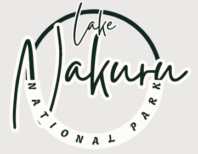Lake Nakuru National Park offers a well-established infrastructure to ensure that visitors can comfortably explore its stunning landscapes and wildlife. From road networks to observation points, this guide will provide detailed insights into the key infrastructure elements that enhance your safari experience.
1. Road Conditions and Driving Routes
The road network within Lake Nakuru National Park is generally well-maintained, although conditions can vary depending on the season. During the dry season, the roads are in good condition, making them easy to navigate. In the rainy season (April-June, November), some roads can become muddy and more challenging for vehicles without 4WD. The main routes within the park are suitable for game drives, with clear signage pointing to major attractions such as Baboon Cliff and Makalia Falls. Visitors are advised to check road conditions upon entry, especially if traveling in the wet season.
2. Picnic Sites
Lake Nakuru National Park offers several scenic picnic sites for visitors to relax and enjoy the beauty of the park. Some popular picnic spots include Baboon Cliff, known for its panoramic views, and Lion Hill, which offers a more secluded environment. These areas are equipped with basic seating and shaded areas, providing a perfect break during game drives. Visitors are encouraged to carry their own picnic supplies, as there are limited food services within the park.
3. Park Entrance Gates
The park has two main gates for entry:
- Main Gate (Nakuru Town): This is the most frequently used gate, providing easy access from Nakuru town. It’s well-staffed, with facilities for purchasing tickets and maps.
- Lanet Gate: Located further from the town, this gate offers a quieter entry point and is often preferred by those traveling from Nairobi. Both gates operate from 6:00 AM to 6:00 PM, ensuring ample time for day visits.
Visitors should ensure that they have all necessary documentation and park fees ready for a smooth entry. It’s also possible to book entry tickets online in advance.
4. Natural Water Sources
Lake Nakuru is a soda lake fed by several rivers, including the Njoro, Makalia, and Enderit rivers. These water sources are critical for the survival of the park’s wildlife, particularly during the dry season when animals gather at the waterholes for drinking. The lake itself, with its high levels of alkalinity, supports the growth of cyanobacteria, which forms the primary diet for the thousands of flamingos that migrate here. Water levels fluctuate throughout the year, affecting the wildlife patterns, especially the flamingo population.
5. Visitor Centers
Lake Nakuru has a few visitor centers strategically located near the entrance gates. These centers provide information about the park’s wildlife, ecology, and conservation efforts. The Main Visitor Center, located near the Main Gate, offers maps, educational exhibits, and knowledgeable staff who can assist with questions and provide guidance for first-time visitors. These centers are great starting points for educational visits, offering a deeper understanding of the park’s natural environment.
6. Park Rangers and Ranger Posts
Park rangers play a crucial role in protecting the wildlife at Lake Nakuru. Their duties include monitoring endangered species such as rhinos and enforcing anti-poaching laws. The ranger posts scattered throughout the park allow for effective patrolling and rapid response to any wildlife emergencies. Visitors can interact with the rangers at designated areas, learning more about conservation efforts and the challenges faced in preserving the park’s ecosystem.
7. Observation Points
There are several well-known observation points in Lake Nakuru National Park that provide stunning views of the landscape and wildlife:
- Baboon Cliff: A favorite among visitors for its sweeping views of the lake, flamingos, and surrounding savannah.
- Lion Hill: Offering a higher vantage point, it’s ideal for photographers capturing sunrise and sunset moments.
- Out of Africa Lookout: Another scenic spot named after the famous film, offering picturesque views across the park.
These observation points are marked on park maps and accessible by vehicle.
8. Restrooms and Facilities
Restroom facilities are conveniently located at picnic sites, visitor centers, and some of the main lookout points. While basic, these facilities are clean and regularly maintained, ensuring visitor comfort during their time in the park. It’s advisable to use these facilities whenever you come across them, as they are spread out across the park and may not always be within close reach.
9. Walking Trails
While Lake Nakuru is predominantly explored by vehicle, there are designated walking trails for visitors who wish to experience the park on foot. The Makalia Falls Trail is a popular route that leads to the stunning Makalia Waterfall, offering a closer look at the flora and fauna. Guided walking safaris can also be arranged through the park’s visitor centers, providing an opportunity to explore the environment with the knowledge and protection of an experienced ranger.
10. Accessibility Features
Lake Nakuru National Park has made significant efforts to ensure accessibility for all visitors. Some observation points, picnic areas, and visitor centers are wheelchair accessible, and ramps have been installed where possible. It’s recommended that visitors with special needs contact the park in advance to arrange for any additional assistance or information regarding accessible routes.
11. Safety Protocols
Visitor safety is a top priority at Lake Nakuru National Park. Clear guidelines are provided at the gates and visitor centers, with key rules such as:
- Remain in your vehicle during game drives, except at designated spots.
- Avoid feeding the animals to maintain their natural behavior.
- Follow speed limits to protect wildlife and ensure safe driving conditions.
Rangers patrol the park regularly to enforce these protocols and assist visitors in case of emergencies.
Conclusion
The infrastructure at Lake Nakuru National Park is well-developed to support a safe and enjoyable safari experience. Whether you’re driving through the park, picnicking at scenic sites, or engaging with park rangers, the facilities are designed to enhance your visit. Understanding the layout and amenities will allow you to plan your trip with ease, ensuring you get the most out of your time at this iconic Kenyan park.
